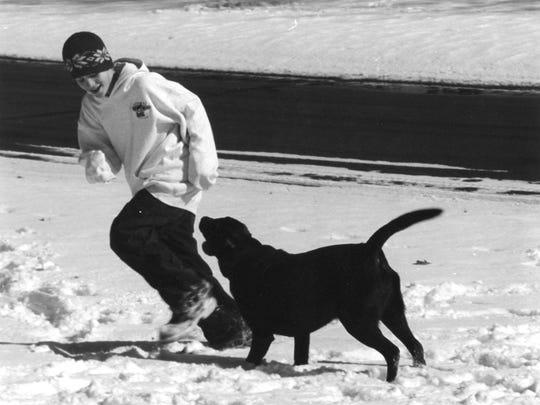Freshmen educated on teen suicide awareness

One of the last photos of Chase Edwards before his death in 2013.
October 28, 2019
As a teen, navigating the troubled waters of growing up and becoming independent is anything but easy. It has become increasingly common for stress and pressure to push teens to their breaking point. While these young adults are silently suffering, mental health remains a stigma, often ignored by the general public. Enter Jeff Edwards, a beacon of hope who allows these students to be let out of the dark.
On Wednesday, Oct. 9th, Edwards ventured to Milford High for the eighth consecutive year in order to spread an important message regarding teen suicide awareness to the freshman class. “I was amazed when I looked at the record,” exclaimed Karen Kerr, a counselor at Milford. “I can’t believe that it has been eight years since he was recommended to me by a counselor at a neighboring school.”
While the task of getting the attention of hundreds of teens may seem incredibly difficult to many, Edwards did it with ease. He began his presentation by introducing the idea of a scotoma: an impairment in which something can be seen in multiple different ways depending on the viewer’s perspective. Edwards projected different images that demonstrated this concept, such as an optical illusion of a young woman who could also be seen as old. This intrigued and excited the students as they compared their perspective on the images with their friends, but it also served as an introduction to a much more serious topic. “If we point out certain characteristics and signs, suddenly we can see things that we couldn’t before,” began Edwards. “That being said, what are your scotomas?”
As students pondered over this question, a picture of a joyous young boy was projected for all to see. At 12 years old, the boy on the screen, Chase Michael, was revealed to have died by suicide. After a moment of speculation, Edwards turns to the audience and asks, “Does this look like a suicidal kid to you?” There was silence. To anybody, Chase Michael would seem like the happiest kid in the world: in every photo, he was grinning from ear-to-ear. “Based on the rule system that we have made in our mind, we don’t see a suicidal kid,” said Edwards. “What do you notice? What do you see? On the contrary, what do you not see?” he continued. “One of the things that you don’t see is the Chase-sized hole in my heart. Indeed, Edwards had revealed to the audience that Chase Michael was, in fact, his son.
After hearing the story of Chase, it became clear that anybody could be silently enduring an endless amount of pain, too afraid to speak up. Edwards tells the audience about how Chase showed no signs of depression or suicidal thoughts, and how he and his wife were clueless as to why he would make such a horrific decision until they uncovered a journal that told of his silent suffering.
In order to bring awareness to mental illness in teens, Edwards told the audience about a “recipe for depression” that consisted of different signs and symptoms that are often overlooked. These included energy loss, difficulty thinking, neglect of work and appearance, and loss of interest. “Suicide coming together is the worst taste in the world,” Edwards explained. “It’s poison. These are the kinds of ingredients that you desperately do not want to come together.”
After learning about the tragedy of Chase Michael and the warning signs of suicide, Edwards began to educate the audience about different ways to find help. “There is no reason why we can’t avail ourselves to approach someone for help,” Edwards began. “Doctors, counselors, health teachers, coaches, or any other trusted adult are able to help in times of need. If one doesn’t work, don’t worry, there are thousands more waiting in line eager to help.” Nowadays, there are even more ways to seek help, including text lines, online therapists, and hotlines.
Once the assembly concluded, students were given a magnet, which served as a way to keep the conversation about mental health awareness going long after students left the auditorium. “I thought that the magnet handout was really important because it gave you a list of the many symptoms of depression and what to look out for and pay attention to,” said Milford freshman Megan Sclabassi.
For years on end, Jeff Edwards has continued to remind students at Milford that it is okay to not be okay, and that they aren’t alone as they endure internal battles. “We hope that Edwards has made a significant impact on students, and he will continue to speak at Milford for future freshmen classes,” said Kerr. It is important for mental health to be talked about, and it is necessary that people are made known of how much they are loved and appreciated so that they won’t make the worst mistake imaginable. “Every single one of you is a priceless, irreplaceable diamond,” exclaimed Edwards. “Every last one of you is far more valuable and far more loved than any of you could possibly comprehend, whether you have heard it recently or not. You can never, ever give up.”